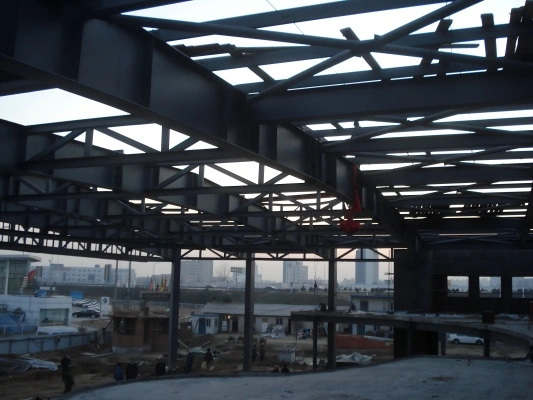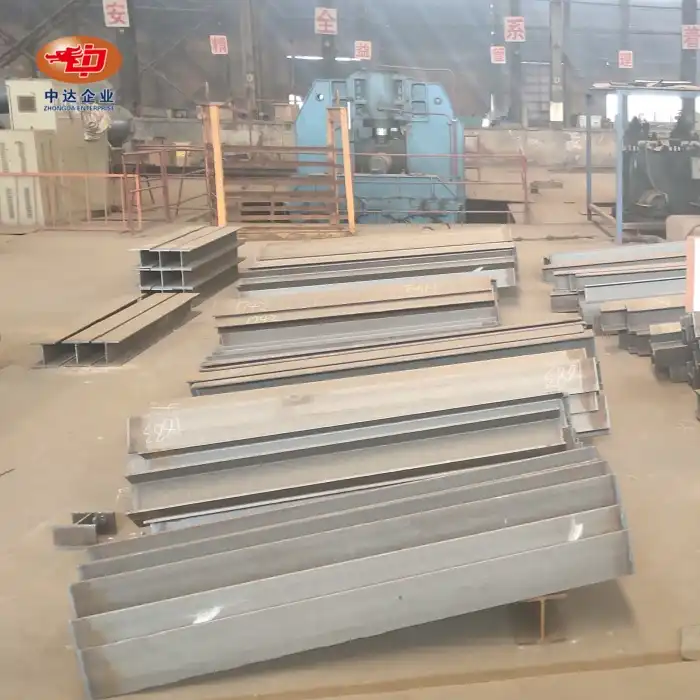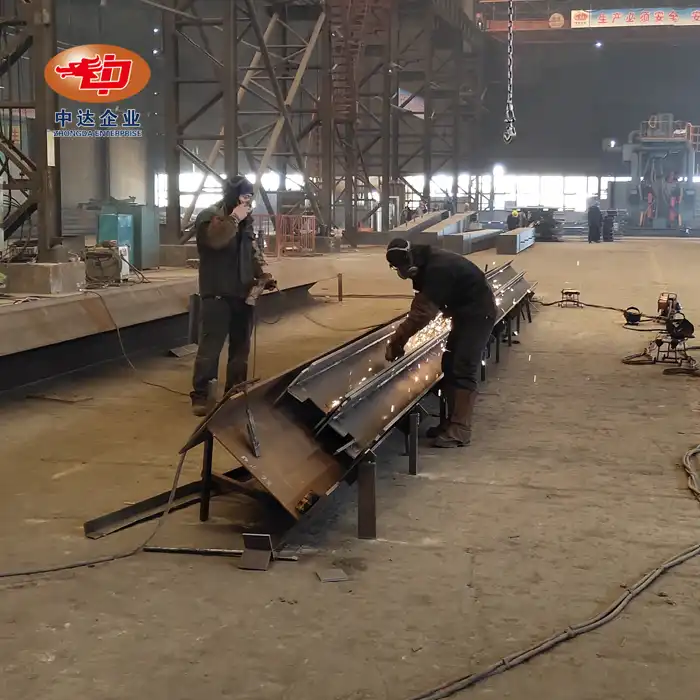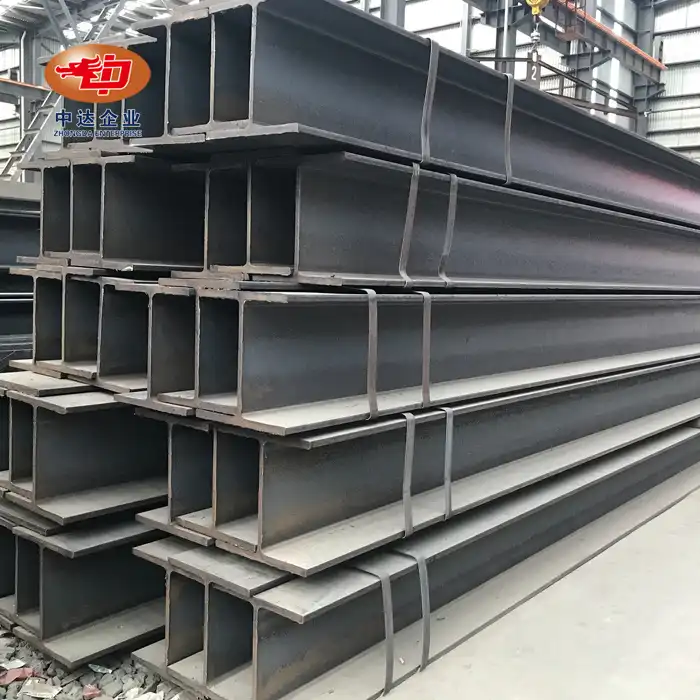Fundamental Welding Techniques for Steel Box Girders
Submerged Arc Welding (SAW)
Submerged arc welding is a cornerstone technique in the fabrication of steel box girders. This method involves the use of a continuously fed electrode and a blanket of granular flux to shield the weld area. SAW offers several advantages for large-scale welding projects:
- High deposition rates, allowing for faster welding of long seams
- Deep penetration, ensuring strong joints in thick steel plates
- Excellent weld quality with minimal defects
- Increased operator comfort due to the hidden arc
At Zhongda Steel, we utilize advanced SAW equipment with precise control systems to maintain consistent weld quality throughout the length of our box girders.

Gas Metal Arc Welding (GMAW)
Also known as MIG welding, GMAW is versatile and widely used in steel box girder fabrication. This technique employs a shielding gas to protect the weld pool from atmospheric contamination. Key benefits include:
- Suitability for welding in various positions
- High welding speeds for improved productivity
- Clean welds with minimal slag
- Ability to weld thin and thick materials effectively
Our skilled welders use GMAW for intricate parts of the box girder, ensuring precision in areas where SAW might be impractical.
Flux-Cored Arc Welding (FCAW)
FCAW combines elements of both SAW and GMAW, using a tubular electrode filled with flux. This method is particularly useful for welding weathering steel box girders due to its:
- High deposition rates in all welding positions
- Excellent performance in outdoor conditions
- Ability to produce welds with good mechanical properties
- Reduced need for pre-heating in some applications
Zhongda Steel employs FCAW for its adaptability to various project requirements and its efficiency in field welding situations.

Advanced Welding Innovations for Superior Box Girders
Hybrid Laser-Arc Welding
As leaders in steel structure innovation, we've incorporated hybrid laser-arc welding into our manufacturing process. This cutting-edge technique combines the benefits of laser welding with traditional arc welding:
- Extremely high welding speeds, up to 5 times faster than conventional methods
- Reduced heat input, minimizing distortion in the steel
- Deep penetration welds with excellent mechanical properties
- Precision control for consistent weld quality
By utilizing hybrid laser-arc welding, we can produce steel box girders with superior joint strength and reduced residual stress, contributing to the overall durability of the structure.
Friction Stir Welding (FSW)
While primarily associated with aluminum, FSW is gaining traction in steel welding applications. This solid-state joining process offers unique advantages for certain components of steel box girders:
- No melting involved, resulting in minimal distortion
- Excellent mechanical properties in the weld zone
- Reduced need for filler materials
- Lower energy consumption compared to fusion welding methods
Zhongda Steel is at the forefront of adapting FSW technology for use with high-strength steels, potentially revolutionizing box girder fabrication.
Automated Welding Systems
Our commitment to quality and efficiency is exemplified by our investment in automated welding systems. These advanced setups offer:
- Consistent weld quality over long seams
- Increased productivity with 24/7 operation capability
- Precise control of welding parameters
- Integration with digital design and monitoring systems
By leveraging automation, we ensure that every steel box girder meets the highest standards of quality and reliability.
Quality Control and Inspection Techniques
Non-Destructive Testing (NDT)
Ensuring the integrity of welds in steel box girders is paramount. At Zhongda Steel, we employ a comprehensive suite of NDT methods:
- Ultrasonic Testing (UT) for detecting internal flaws
- Magnetic Particle Inspection (MPI) for surface and near-surface defects
- Radiographic Testing (RT) for a complete view of weld quality
- Penetrant Testing (PT) for identifying surface-breaking defects
Our rigorous NDT protocols exceed industry standards, guaranteeing the structural integrity of every box girder we produce.
Weld Monitoring Systems
To maintain consistent weld quality, we've implemented real-time weld monitoring systems that offer:
- Continuous tracking of welding parameters
- Immediate detection of deviations from specified tolerances
- Data logging for quality assurance and traceability
- Integration with our quality management system
This proactive approach allows us to address potential issues before they impact the final product, ensuring every steel box girder meets our exacting standards.
Metallurgical Analysis
Understanding the microstructure of welds is crucial for long-term performance. Our in-house metallurgical laboratory conducts:
- Microstructure analysis to verify proper weld fusion
- Hardness testing to ensure consistent mechanical properties
- Chemical composition analysis to confirm material specifications
- Corrosion resistance testing for weathering steel applications
These analyses provide valuable insights that inform our continuous improvement efforts in welding techniques and material selection.
Conclusion
The best welding techniques for steel box girders combine traditional methods with cutting-edge innovations. At Shenyang Zhongda Steel Structure Engineering Co., Ltd., we leverage our expertise in SAW, GMAW, and FCAW, while pushing the boundaries with hybrid laser-arc welding and exploring the potential of FSW. Our commitment to quality is evident in our comprehensive NDT protocols, advanced monitoring systems, and detailed metallurgical analyses. By continuously refining our welding processes, we ensure that our weathering steel box girders set the standard for durability, efficiency, and structural integrity in bridge construction worldwide.
Contact Us
Ready to elevate your bridge projects with superior steel box girders? Zhongda Steel offers unparalleled expertise in weathering steel fabrication, innovative welding techniques, and customized solutions for your specific needs. Experience the durability and efficiency of our weathering steel box girders firsthand. Contact us today at Ava@zd-steels.com to discuss how we can contribute to the success of your next infrastructure project.














